Thursday Thoughts March 9
STEAM day was amazing! I actually had a 5th grade student walk up to me and thank me for allowing the school to do STEAM activities all day. I'm ashamed to admit that I said "you are so welcome," as if I had the right to take the credit. I can't thank you all enough for making this day one to remember for students. The communication, collaboration, creativity and critical thinking(4Cs) that took place in classrooms (and in the garden) yesterday was unbelievable! Sure...I walked into some classrooms and had a little anxiety when I saw Styrofoam, cotton balls and glitter everywhere but I quickly remembered that this is what the day was all about. Students learn best by doing and based on what I saw, some of our best teaching and learning of the year took place on yesterday. Thank you!
Staff Spotlight
This week I would like to shine the spotlight on Nikki Panjwani. Earlier this school year, Nikki moved from Pre K to IRR. In this role, she supports students in at least four different classrooms and is constantly on the move. You will often see her working one on one with specific students or helping small groups of students within their classroom. She is kind, patient and strives to give her very best to all of the students in her care. Whenever she has a couple of minutes to spare, Nikki volunteers to help Susan in the front with copies, filing or anything asked of her. Nikki we thank you for your flexibility and your dedication to students.
Test Prep Activities That Build ConfidenceBy Mary Blow
March 7, 2017Scholastic.com
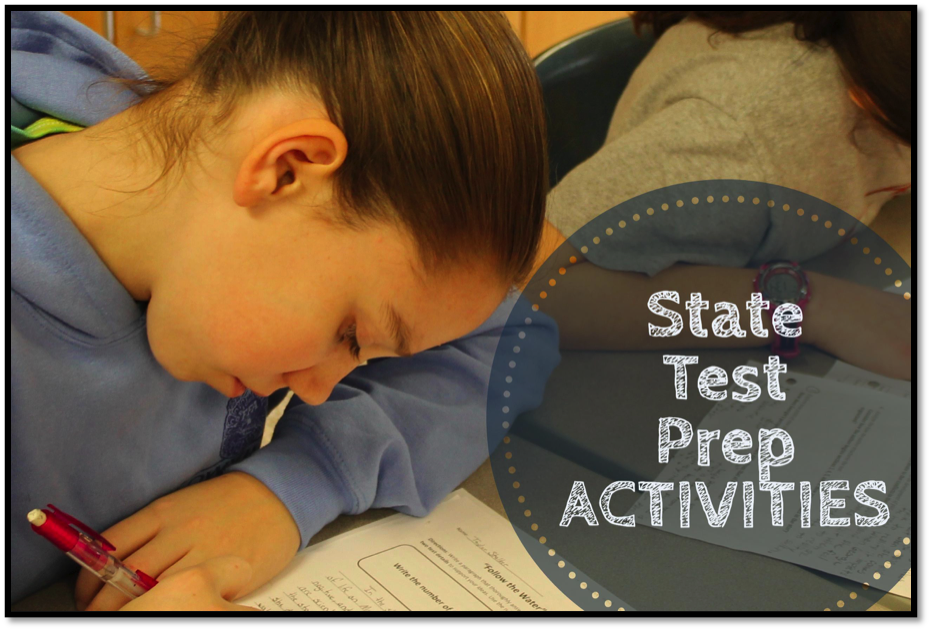
As I write this, state testing is imminent. We have been working hard and learning so much, but like many of you, I am apprehensive because many students, for various reasons, struggle to transfer what they have learned to state testing situations. The activities below are designed to review what we have learned this year, explore how to transfer knowledge and skills to state test situations, and build confidence.
Talk to Your Students
Talking with my students is the first step for preparing them for state tests. They are extremely honest when sharing their concerns. The insight allows me to customize the review activities. This in turn builds their confidence and alleviates anxiety, which helps them to perform better.
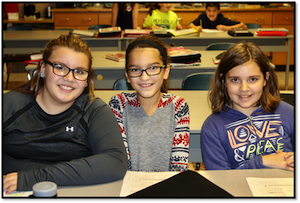
This year, for example, my sixth graders shared the following concerns:
1. “I get confused about what I am reading,” a young man shares. After some discussion, I learn that the lack of images and other text features puts struggling readers at a disadvantage, especially because many of the passages are excerpts and little context is provided. Showing them how to establish background knowledge will be important.
2. “I always end up guessing on the multiple-choice questions,” confesses another brave student. “I can get it down to two answers, but then I’m stuck.” I mentally note that many students are getting hung up on the distractors. Multiple-choice debates will help alleviate this problem.
3. “I never know what the questions are asking,” one student shyly states. I look around the room and many students reiterated this concern by silently nodding their heads. After some discussion, it becomes apparent that many don’t understand the formal language used on state assessments. BINGO! They need to learn how to break down writing prompts to transfer what they know and to clarify the implicit and explicit tasks.
4. “My brain shuts down, and I can’t focus,” shares another. Before I can respond, another student pipes in, “Me, too. I get nervous and forget everything I know.” It is apparent that test anxiety is impacting some students’ success. We will definitely shake off test anxiety with some brain exercises and fun activities the day before the test.
Establish Background Knowledge
Whenever starting a new text in class, my students preview the passage and establish a mindset. We usually read passages that are rich in text features, which are key to activating prior knowledge. But, what happens when there aren’t any text features and my sixth graders, especially my struggling readers, are looking at pages and pages of text? They lose confidence. They get anxious. They shut down.
To prevent this from happening, I teach my students to skim the text, reading the first phrase or sentence in each paragraph to activate prior knowledge. Luckily I have a great resource, Unlocking Complex Text by Laura Robb. In addition to great reading strategies Robb shares for comprehending, there is a CD of printable passages in the back of the book. I use The Great Fire and Blizzard both by Jim Murphy for this activity.
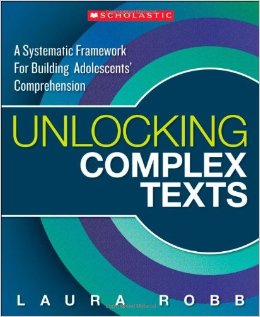
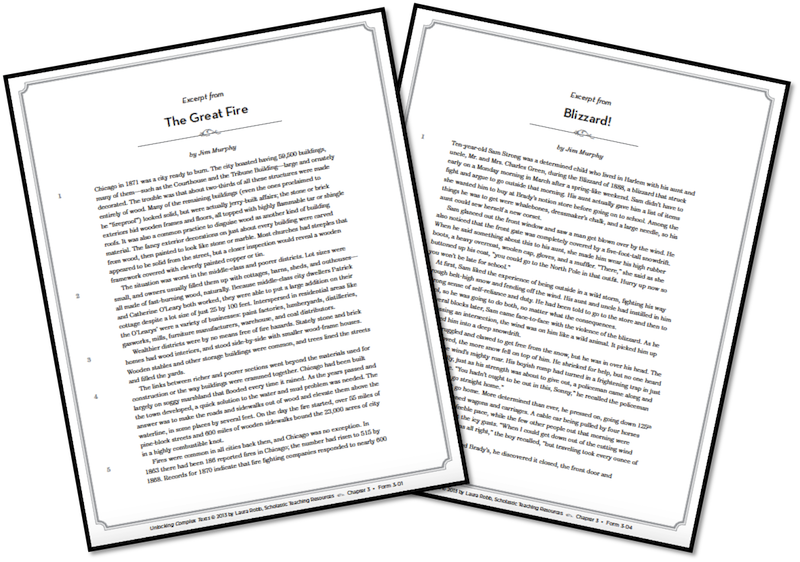
- “The Hokey Pokey”
- “The Twist”
- “Macarena”
- “Continental Drift”
Since there aren’t any pictures, I tell them to read the beginning sentence or phrase in the first line of each paragraph. One student reads the first line aloud. The next student reads the first line in the second paragraph, and so forth, until we get to the end of the passage.
Below is an example from the first four paragraphs:
1. Student 1: “Chicago in 1871 was a city ready to burn” (paragraph 1).
2. Student 2: “The situation was worst in the middle-class and poorer districts” (paragraph 2).
3. Student 3: “Wealthier districts were by no means free of fire hazards” (paragraph 3).
4. Student 4: “The links between richer and poorer sections went beyond the materials used…” (paragraph 4).
It takes about 30 to 40 seconds to complete the entire passage, time well spent in a testing situation. Before we begin reading, we share what we learned. In these four paragraphs, we learn that the setting is Chicago, 1871. There are poor and rich neighborhoods. The fire affects all neighborhoods, but the middle and poor neighborhoods appear to be at a bigger risk. Knowing all this information before reading the passages establishes background knowledge.
We know students’ comprehension increases with repeated readings, but many students struggle to make it through the first reading. The test is hours long. My sixth graders better comprehend the text the first time through because their minds are not focused on establishing the gist of the article. I do suggest, however, that they reread selected sections of the text identified in the questions.
Hold Multiple-Choice Question Debates
Of course I teach my students to circle key words and eliminate answer choices they know are not the answer, but what happens when they are down to two choices? In response to my students who struggle with multiple-choice questions, those who over analyze and those who done read close enough, I fall back on a tried and true activity, multiple-choice debates. In the blog “Think-Pair-Share Test Prep Activities,” I explain the activity in detail.
During this activity, students work in groups, discussing their multiple-choice answers before handing in homework. If they don’t agree on an answer they debate it, using text details to support their reasoning. The first time we do this, each student turns in a separate handout for an independent grade. Whether or not they choose to change their answers is up to them.
The second time, I raise the stakes to encourage stronger debates. Each student comes to the group with completed handouts; however, each group member must agree on a single answer for each question. The group secretary completes a master copy from which all students receive the same grade. Older students might be able to jump right to this higher level of debate, but I like to ease my students into the debate process.
Mixed-ability grouping is important to the success of this activity. I group them based on their style of thinking. For example, some students are very analytical, focusing on the minutest detail and overanalyzing the questions. Others focus on the big picture and overlook significant details. The mixed-ability grouping helps my sixth graders to become diverse thinkers. It isn’t foolproof, but they do become better at analyzing the questions.
Break Down Writing Prompts
Many of my students struggle with formal assessments, not because they cannot read well, but because they don’t understand the formal language used in the questions. They aren’t sure what the question is asking them to do. Your state test writing prompts may be different, but ours consist of implicit and explicit tasks that students must complete. Some of these questions require students to complete up to three tasks, some of which are hidden in the formal language, making it even more difficult for my sixth graders to succeed.
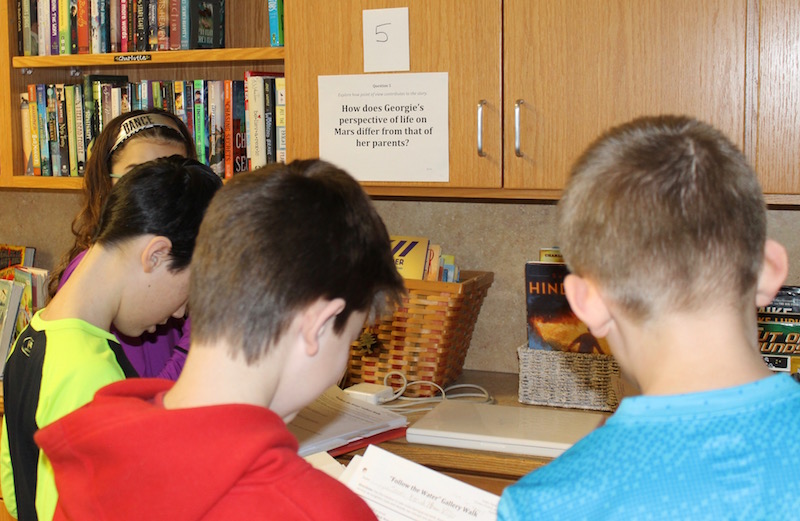
I created a gallery walk activity to review and to address this concern. You can replicate this activity with any piece of literature, fiction or nonfiction. I used a science fiction short story “Follow the Water” from Scholastic Scope because I wanted to review literary elements. Visit Scope’s Ideabook “The Test-Readiness Activity You Need” for step-by-step description of this activity, including handouts and illustrations. Scope’s Ideabook is open to all teachers.
The gallery walk activity requires students to identify keywords, clarify academic vocabulary, list the implicit and explicit tasks, and discuss the answers. This was a very powerful activity that required my students to recall and apply what they learned about fiction literature. It was so successful that we will do this again to review nonfiction texts.
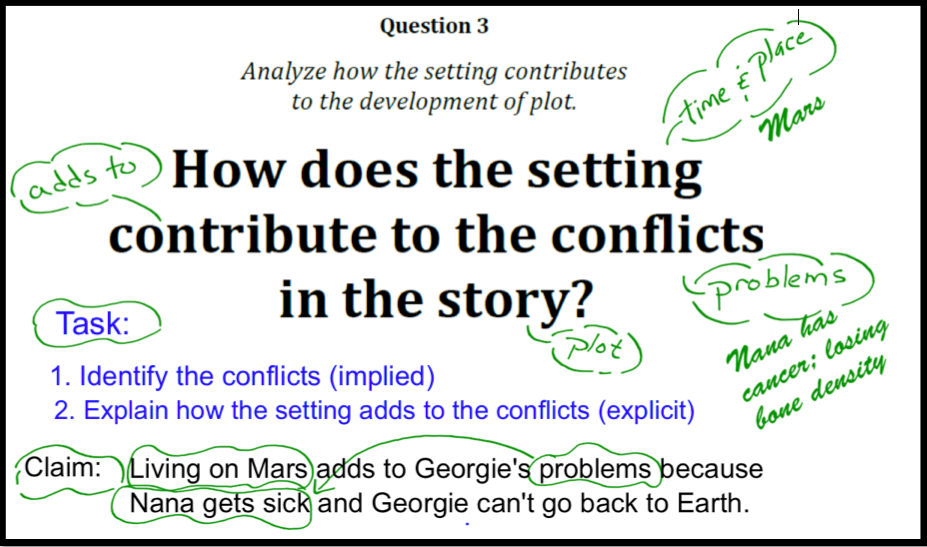
Working in groups of 4-5, students analyze and annotate a writing prompt designed to mimic those on state tests. Each group member becomes a specialist on one question. When finished, they are re-grouped. One expert for each question is now to a new group.
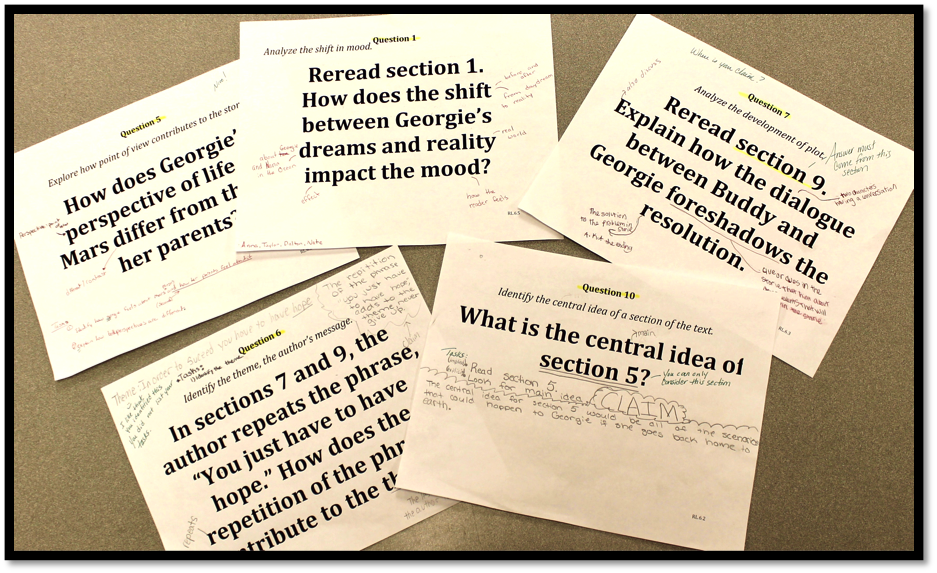
As they travel through the gallery, the expert in each group becomes the leader, teaching the others how to break down the prompt. They clarify terms and jot down text connections. Everyone takes notes during the discussion, which they are allowed to use for the independent writing portion of the activity.
At the end of the gallery walk, each student draws a number that correlates to one of the questions. Students respond in a thoroughly written paragraph. I like the group effort, but individual accountability that keeps everyone invested. When we finished the activity, I overheard one student say, “This was hard, but it was fun.”
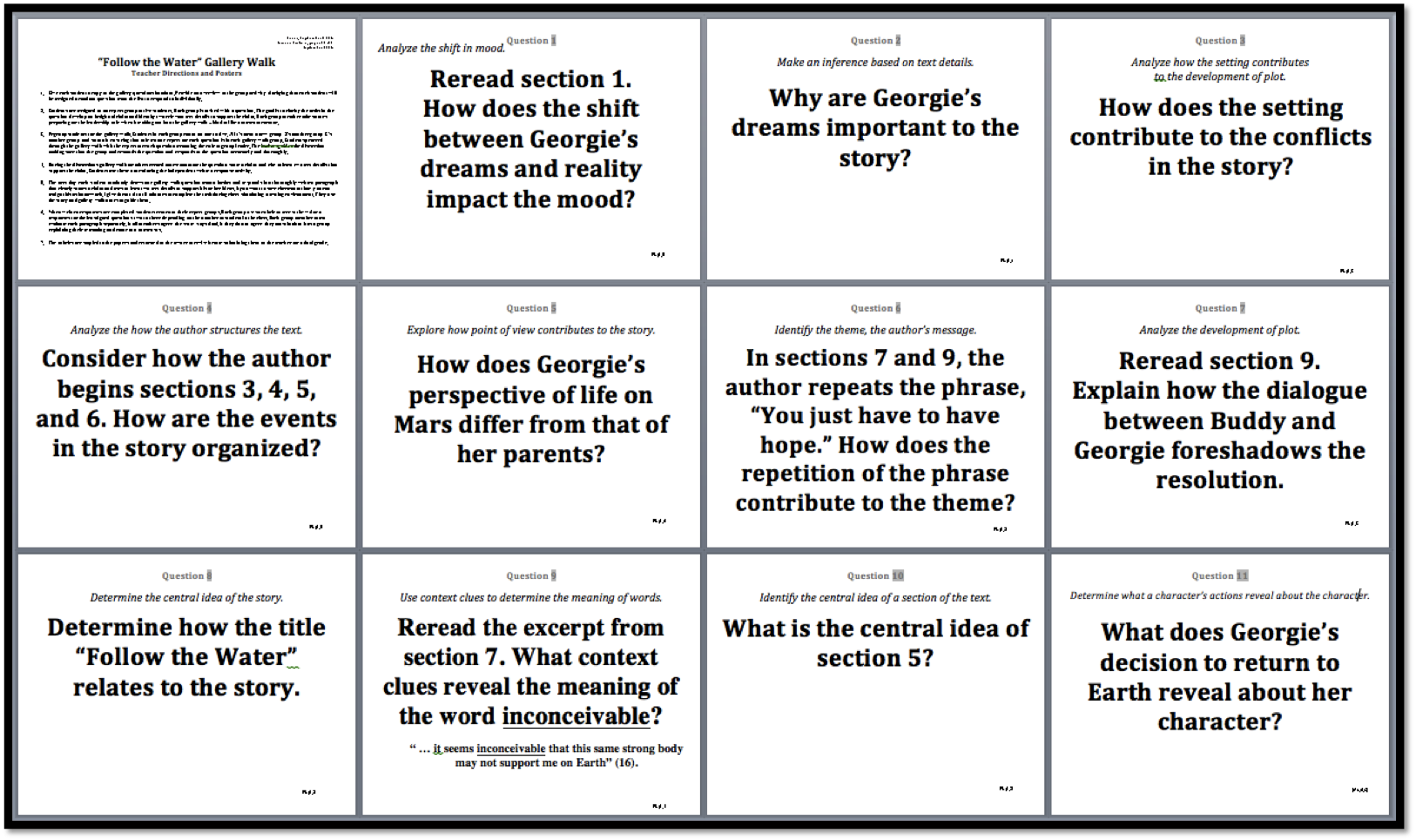
The activity is differentiated. The easier questions are assigned to students who struggle, and I assist them during the gallery walk to be sure the information they are sharing is thorough and accurate.
Shake off Test Anxiety
In May 2011, I posted a blog “Conquering Text Anxiety” in which I share a video on brain exercises to help reduce test anxiety. The exercises in this video can be done in a testing environment to help students regain focus.
Last year, we added a little exercise and fun to shake off the anxiety. We danced our stress away. We will definitely do this again, dancing to our favorite songs:
Enjoy the fun. It is a well-deserved break for both teachers and students as laughter and singing chases the worries away.
Occasionally I like to refer back to lessons we learned from reading classical picture books. This is a good time to read The Little Engine that Could by Watty Piper. Developing the Little Engine’s “I think I can…” attitude is important to building confidence and reducing test anxiety. A pep talk takes very little of your time and is extremely important, maybe the most important of all activities. Like the Little Engine who repeats, “I think I can…” over and over until he reaches his goal, students chase away doubt by reciting the same mantra at the first sign of wavering confidence. Believing they contributes to their success.

Finally, I reaffirm that it is only one test in a day in their life, reinforcing that whether it is a year from now or 10 years from now, I am not going to remember what they scored on a test. They are not defined by a number — not by a state test score or by a grade on a report card. They are defined, however, by their actions and attitude. When I see them in the future, I will remember how hard they worked to be successful in my class throughout the year, acknowledging how much respect I have for students who work hard. “If you do your best,” I reassure them, “then I will be proud of you.” Fear of failure is conquered; they feel confident.
I am sure you have worked as hard as we have to become great readers and writers this year. I hope these activities help your students to succeed.

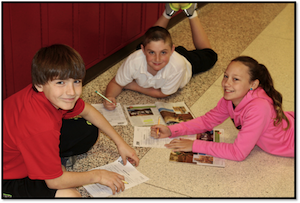
No comments:
Post a Comment